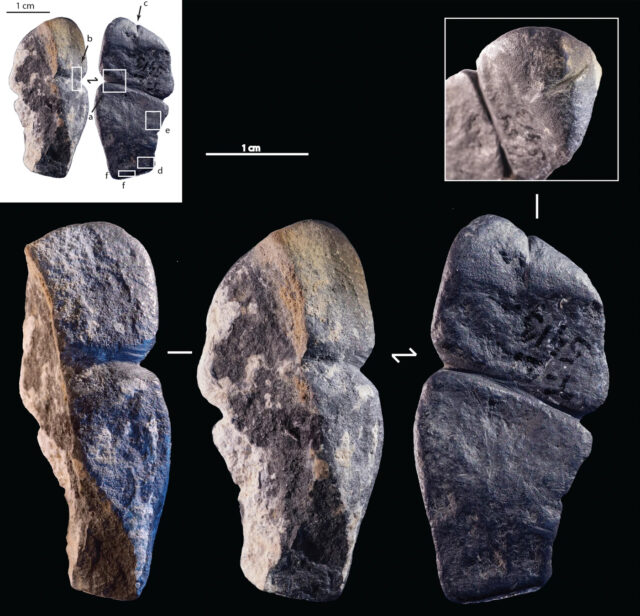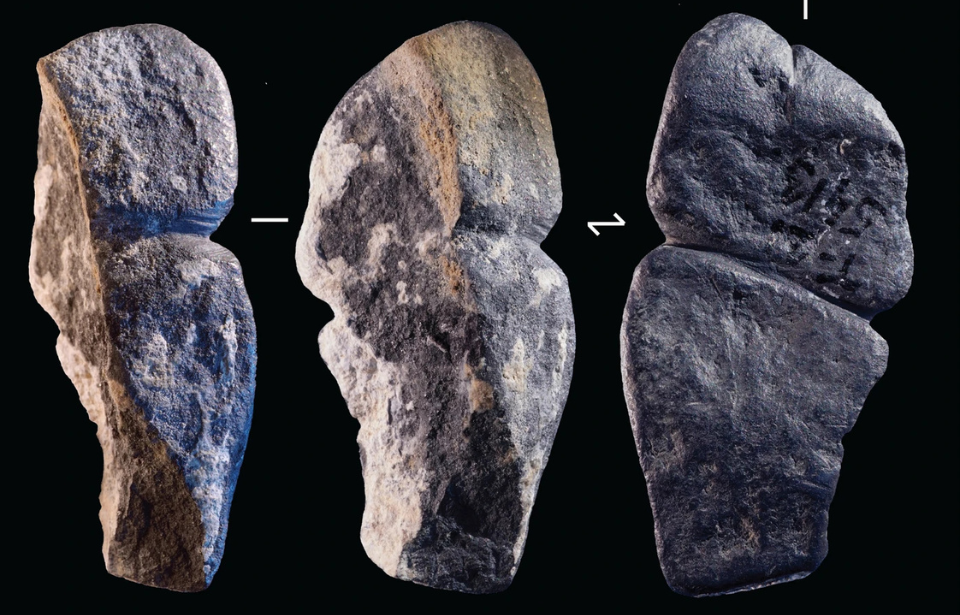An archaeologist has found what could either be the oldest artistic representation of a phallus from the ancient world or a very insignificant cave rock. Certain characteristics have led researchers to believe that the artifact is indeed a tiny penis, while others feel like something is being made out of nothing. The jury is still out as to the truth.
The small stone was found in 2016
42,000-year-old Mongolian pendant may be earliest known phallic art | Science https://t.co/7spwlD8NB8
— Chris Stringer (@ChrisStringer65) June 17, 2023
Many incredible things have been discovered at a site called Tolbor, located in Mongolia’s northern Khangai Mountains in 2016. Tolbor is a treasure trove of Paleolithic artifacts, including extremely well-preserved images carved into rock faces, known as petroglyphs, and several burial mounds. These artifacts help to give researchers a glimpse into the ancient civilizations that lived in the area, as well as establish a deeper understanding of their artistic expression.
When a small stone was discovered there, it was decided that it wasn’t just any ordinary small stone. In fact, it could very well be the oldest known “phallic-pendant,” as identified by archaeologist Solange Rigaud of the University of Bordeaux and the rest of her team. It is only 4.3 centimeters in size, but the markings that were carved into the graphite suggest it holds a larger significance.
Rigaud believes the pendant is phallic

The rock was found beside bits of an ostrich eggshell pendant, ostrich eggshell beads, other stone beads, and animal bones. Rigaud says that the little phallic pendant is the “earliest-known sexed anthropomorphic representation.”
After looking at the stone microscopically, she believes that the ancient carver who created the phallic pendant took great care to “define the urethral opening and to distinguish the glans from the shaft,” with a marked groove. Additionally, she noted how one side of the pendant was smoother than the other, suggesting “a string was likely fastened around the glans and worn around the neck.” As it is made of graphite, Rigaud believes that the pendant may have been brought to the region from somewhere else, possibly through trade.
If she is correct, then this confirms that the human species has been “artistically recreating the penis for at least 42,000 years.” She dates the creation of the pendant between 42,400 and 41,900 years ago, but the method by which she reached this conclusion has ignited some controversy. Instead of radiocarbon dating the artifact itself, Rigaud applied that technology to the organic material found surrounding the stone.
Some researchers disagree with the conclusion

Unfortunately, not everyone agrees with Rigaud’s archaeological discovery. Some question whether she has fallen victim to pareidolia. Pareidolia is a cognitive phenomenon wherein humans find themselves seeing familiar imagery in completely unrelated objects, for example, seeing animal shapes in the clouds, or seeing faces in a burning fire. Though they are not actually there, our recognition of something familiar makes us believe it is.
Many wonder if Rigaud simply found another cave rock. One archaeologist, Curtis Runnels of Boston University, falls into this camp, saying that the phallic imagery she perceives is “like a face in a cloud, and they often only exist in the eye of the beholder.” For him, the stone doesn’t even look phallic in nature. Instead, he just sees it as a “small and rather shapeless object.” Runnels says it would take some pretty hard convincing for him to believe that it is a genuine ancient representation of a penis and not just another rock.
More from us: The ‘Shlong’ Awaited Reopening of Lord Byron’s Vault Revealed a Shocking Secret
There are some scholars who feel as though the small stone may have some significance beyond just being another cave rock, but think maybe it has been misinterpreted by Rigaud. Instead of a phallic pendant, they suggest that it might have been used as a tool of some sort. This includes a pestle for crushing things in a wooden bowl or other kinds of useful purposes.
